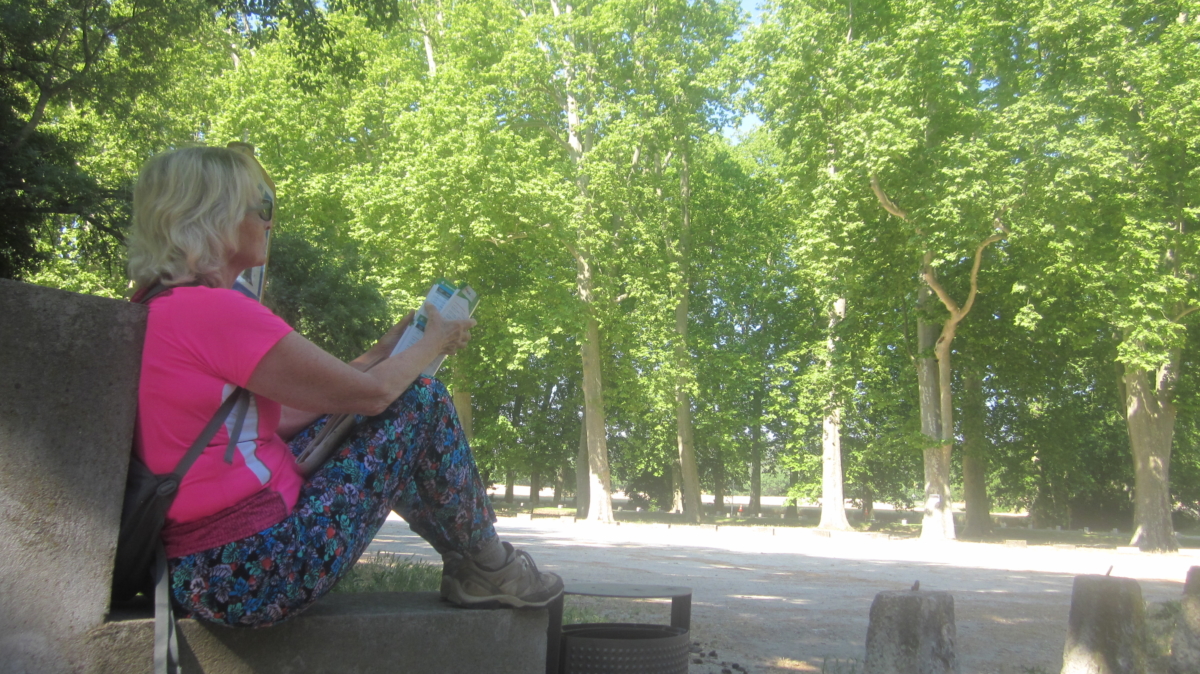Catching local buses can be a good and a bad idea – good, because they are not crowded, the driver can help you with information, you can mostly go when you want and it’s not touristy – but bad because it often takes trial and error to work out timetables, and actual destinations. Today it was a mixture. We caught the right bus but then had to connect with another which was not as reliable. While waiting it did give us a chance to look around the village of Le Tholonet, however it took up valuable cool walking time.
Being high up in a bus and traveling slowly because of the winding ‘up and down’ roads gave us time to look at Mont Sainte-Victoire, as Cezanne did, from many different altitudes, positions, and angles. Cezanne would have been a little pleased, because this is partly how he painted. He would paint the same subject countless times but always produce something entirely, or sometimes subtly, different, but usually from changing just his position. We arrived in our second bus at Puyloubier which has the mountain as it’s backdrop.
The mountain’s name, which translates as “Mountain of Holy Victory,” was associated with a celebrated victory by Provence’s ancient Roman inhabitants against an invading army. Cézanne painted more than sixty versions of what he called “his” mountain, yet none of the paintings look exactly the same.
No one is sure why Cézanne returned to this subject so often. The mountain stands out boldly from its surroundings, just as Cézanne stood apart from his fellow artists, and both are closely linked to the artist’s native Provence. Perhaps his many paintings of this mountain reflect his love of Provence, or his interest in discovering new aspects of a familiar place.
Picasso was so in awe of the French artist, that he referred to him always as Monsieur Cézanne. That awe seems to have prevented Picasso from even attempting his own version of the mountain. When he painted the view from Vauvenargues, he always turned his back on Mont St Victoire and looked instead towards the village.
We can imagine Cézanne looking out over this landscape and noticing how the shapes of the rooftops or the profile of the mountain changed as he shifted his viewpoint. In this painting Cézanne was not concerned with reproducing the exact details of the scene before him. He hoped instead to create a “harmony parallel to nature.” We can see that goal fulfilled in his carefully harmonized patches of color that fit together like pieces in a mosaic.
In a letter to his son in 1906, he wrote: “the same subject seen from a different angle offers subject for study of the most powerful interest and so varied that I think I could occupy myself for months without changing place, by turning now more to the right, now more to the left.
Cezanne pursued his individualistic style. While Impressionists depicted changing light and atmospheric effects, he was more interested in studying the underlying structure of the landscapes he painted. He said, “I wanted to make of Impressionism something solid and enduring like the art in museums.”
The ghosts of Cezanne and Picasso may haunt me a little as the above is a mixture of my own writing and that of others, that help explain more of Cezanne’s painting style. We travelled back by one bus this time wondering what Cezanne would think of the idea of taking photos from a moving vehicle.







